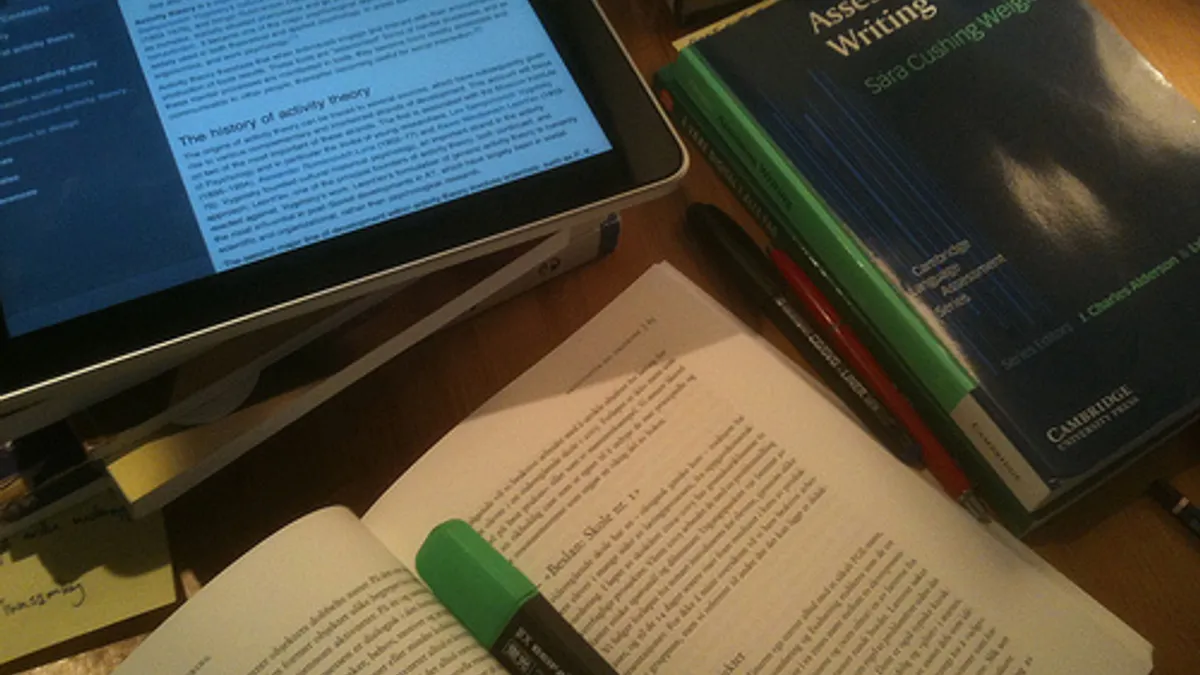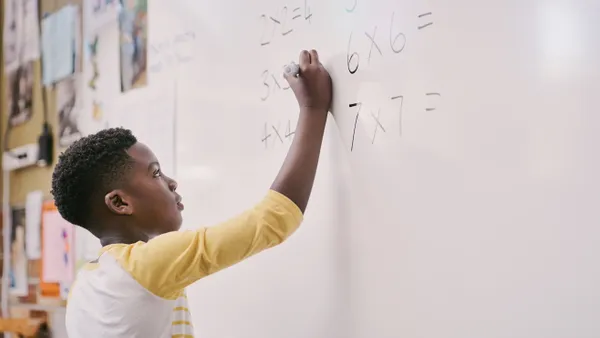Dive Brief:
- History textbooks are facing increased scrutiny, with some educators advocating to rid classrooms of them entirely as uncomfortable details and nuance often take a backseat to the desire for a linear narrative, historians rarely agree on a single interpretation of events, and state standards established by legislators can politically taint texts during the adoption process, EdSurge reports.
- A New York Times analysis shows how large states like California and Texas have different versions of the same textbooks — from major publishers such as Houghton Mifflin Harcourt, Pearson and McGraw-Hill — influenced by partisan politics.
- Some teachers advocate for historiography, which means students research history for themselves and contrast different points of view to ultimately reach their own conclusions. This method, they argue, teaches students how to think rather than what to think.
Dive Insight:
Recently, Juneteenth served as an example of the lack of depth in history textbooks apply to some topics. Though recognized as a state holiday or a day of observance in all but three states, the history of the holiday, also known as Emancipation Day, is not taught in most schools. A School Library Journal Twitter poll indicated 90% of respondents do not teach students about the holiday.
A lack of culturally responsive curriculum, not just in history but in all subjects, also leads to a lack of diversity, inclusivity and representation of minorities, according to a report by the NYC Coalition for Education Justice. The New York City Department of Education has taken steps on this front to overhaul curricula and better represent its student population. Nearly 67% of the district’s student population is Black or Latino, yet about 84% of the authors students read in elementary school are white.
Women’s history is also lacking representation in textbooks, according to a report by the National Women’s History Museum. The report shows women’s achievements in science, technology, engineering and math (STEM) are mostly left out, creating consequences for future generations as students are more likely to aspire toward careers when they can see role models who look like them in those fields.
School publications are also taking internal looks at their own content to cull cases of racial biases. The social studies publication Studies Weekly, for example, launched an internal review after a Black 5th-grader from Tennessee was prompted to write from the perspective of a Southern cotton plantation owner in support of slavery.







 Dive Awards
Dive Awards






